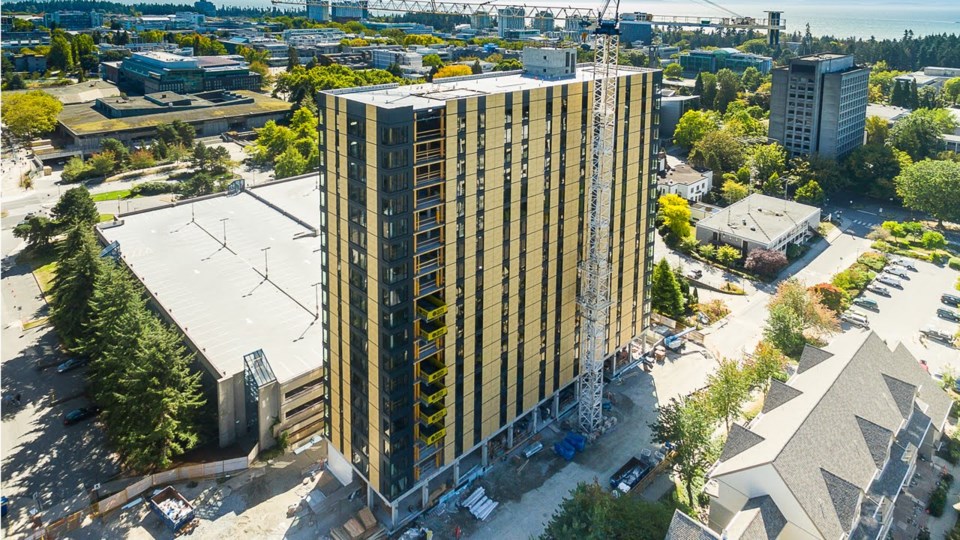Burnaby won’t be seeing 12-storey wood-frame buildings anytime in the next couple of years, with city staff expressing significant concerns with the province’s pilot program to double the height limits of wood construction.
But the city will likely be removing red tape around five- and six-storey wood-frame buildings in the near future.
Currently, developers need a zoning amendment for any building higher than four storeys to be constructed out of wood, but city council voted recently to endorse a proposal to remove that requirement.
Provincial regulation has allowed five- and six-storey wood construction as early as 2009, but now the B.C. and national building codes are changing in favour of 12-storey wood construction.
That includes a December 2019 update to the B.C. Building Code applicable to a select few cities and an anticipated 2020 update to the National Building Code, according to the city staff report.
In large part, the higher construction is being bolstered by newer forms of wood construction, particularly encapsulated mass timber construction (EMTC). This construction, which encapsulates thick, layered blocks of wood with fire-resistant materials, offers more structural strength as well as fire resistance.
Cities were notified in March 2019 of the B.C. government’s interest in early adopters of EMTC. Specifically, the province sought cities to test out the new B.C. Building Code for 12-storey wood construction, with the ability to apply for the early adopter status by August last year. The city, however, found the timeline to be too tight and decided not to opt in.
Although the August 2019 deadline has passed, staff told council there remain opportunities to be included in the 12-storey wood construction pilot, but they offered strong reservations for doing so.
“While the planning department is generally agnostic with respect to construction methods for new development projects … the building division and fire department have justified reservations about early adoption of EMTC,” staff wrote in their report.
Staff also noted that the use of mass timber construction is still “experimental in nature.”
“Staff feel that the initiative is premature, as the relevant building codes have not yet been adopted nationally. It is a concerning issue, for example, that the structural portion of the NBC (National Building Code) has not been finalized,” staff wrote.
Staff said they were particularly concerned that there could be unanticipated changes to the NBC that are not accounted for in the pilot.
“In addition, there has not been sufficient consultation with local governments on the early adoption initiative,” staff said, calling the initiative an “unfunded exercise in testing the feasibility of this type of construction.”
“Therefore, the early adoption initiative shifts undue responsibility for early adoption of this new technology onto local governments. The participating local governments are expected to provide feedback and other information on their EMTC projects to the province.”
With that in mind, staff said it is “apparent that the primary benefit of this pilot project is to the province.”
City staff also offered concerns around exposed elements, such as uninsulated wood beams in office buildings prior to tenants moving in, as well as concerns around the province allowing flammable materials like wood roofing without extra fire protection.



